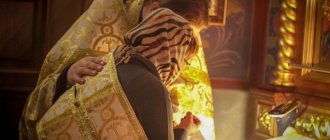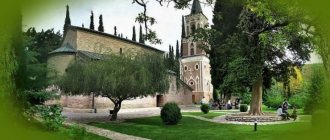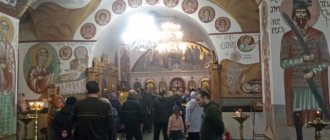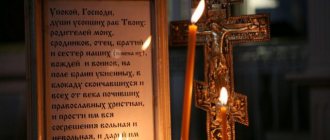The Svetitskhoveli Orthodox Cathedral, or in official sources the “Temple of the Twelve Apostles,” is located in the center of the Georgian city of Mtskheta. The monumental structure rises proudly against the backdrop of the surrounding mountains. Not far from it on a hill stands the Jvari Monastery.
The most famous and largest architectural monument of the city was erected in the 11th century. This is the second largest and main Orthodox cathedral in the country. Its popular name is translated from Georgian as “miraculous pillar”.
The church in Mtskheta keeps several Orthodox shrines: the robe of Jesus Christ, the clothes of the prophet Elijah, a particle of the relics of the Apostle Andrew the First-Called, the font of King Mirian and the burials of noble persons. In 1994, the Georgian temple was recognized as a monument of global significance. Today Svetitskhoveli is the residence of the Archbishop of Mtskheta and Tbilisi.
Legends of the Svetitskhoveli Temple
This temple is mentioned in the works of the outstanding Georgian writer Konstantin Gamsakhurdia. The writer’s novel, entitled “The Hand of the Great Master,” tells how this church was built, how Christianity spread in Georgia, and also tells the history of the country itself.
Legend about the name of the temple
A rabbi named Elioz lived in this region in the 1st century. He saw Jesus Christ crucified. After that terrible execution, he managed to buy a piece of Christ’s tunic and brought it to Georgia. The rabbi handed the shrine to Sister Sidonia. When the girl took the cloth in her hands and pressed it to her heart, she fell lifeless. She died like that, they couldn’t take the fabric from her hands and they buried her along with a piece of her chiton.
After Sidonia’s burial, a cedar tree with medicinal properties grew in the garden near her grave. Over time, a church began to be built on this site by order of King Mirian III. The cedar was cut down. Its wood was used for 7 pillars for the construction of the cathedral. The remaining cedar stump began to stream myrrh. People come to him to save themselves from serious illnesses and offer prayers in this place. The Pillar and Robe of the Lord are important shrines in Georgia. In their honor there is a Christian holiday, which is celebrated in the fall and also in the spring.
The legend of the architect
The architect who was involved in the construction of the temple came from a poor family. When Arsukidz finished the construction of the cathedral, envious people slandered him and cut off the architect’s hand. According to the second version, this was an order from the king, who did not want the architect to be able to build an even more beautiful temple.
The facade of the cathedral is decorated with a drawing that tells this story, and there is also a call to commemorate the architect.
The Chiton of Jesus Christ is a shrine of the German city of Trier
| Robe of the Lord |
The city of Trier (Trier an der Mosel) on the Moselle River, located on the western border of the German state of Rhineland-Palatinate, appears in reference literature not only as the oldest city in Germany, but also the very first Christian city on German soil, which once existed in Western Europe title of "holy city".
Many of its rare historical monuments, preserved from ancient times, together with unique Christian shrines, have been declared by UNESCO to be a world cultural heritage. Among them is the famous tunic of our Lord Jesus Christ. Augusta Treverorum is the original name of Trier, founded presumably by Emperor Augustus himself back in 16 BC. In the 3rd and 4th centuries, Trier had the status of “city of emperors” and the capital of the province of Belgica I, but in the 5th century it was captured and destroyed by Germanic tribes. Since then, the city has not managed to regain its former significance, but many architectural monuments have been preserved, including temples, indicating that the first centers of Christianity on the territory of modern Germany arose in the regions that were part of the Roman Empire. Church dioceses were also formed on the basis of its administrative structure. In Trier (Trevers), the center of the province, the largest bishop's see (metropolis) was located. The Trier See is considered the oldest in modern Germany. The first bishops of Trier were the disciples of the Apostle Peter - Saints Eucharius, Valerius (their tombs have been preserved) and Maternus, as well as Saint Agretius († 333).
After the division of the Roman Empire into East and West Trier, for several decades (until 387) it was the capital of the Western Roman Empire, where Constantine the Great ruled from 306 to 316, who, after a series of reforms, granted freedom of religion to Christians and established Christianity in his possessions. The city was visited by the mother of Emperor Constantine, Equal-to-the-Apostles Helen, who, as is known, endeared her son to the Christian faith and found in 326 in the Holy Land many shrines related to the circumstances of the life of Jesus Christ. Among other things, she also acquired His robe – a tunic. By order of St. Helena, this tunic was transported to Trier and left there forever, and Emperor Constantine in 326 began the construction of a cathedral in honor of the Blessed Virgin Mary, where the tunic of Jesus Christ was first placed, which immediately attracted the attention of pilgrims. He also ordered the construction of a more majestic temple for this priceless shrine near the episcopal church, the foundation of which, according to legend, was the house donated to the Christian community of Trier, where Equal-to-the-Apostles Helen stayed and lived. Part of her relics (the chapter) is now kept in the crypt of the Trier Cathedral of St. Peter, which was built in several stages from 336 to 380, and then from the 11th to the 16th centuries.
| Trier Cathedral |
By its design, the Trier Cathedral (dom) is a basilica with three naves, two galleries with a transepis and six towers, and in the center of the basilica the part where the robe of the Savior was originally located is still preserved.
In combination with the adjacent Gothic Liebfrauenkirche church, built in 1235–1260, the modern cathedral, with its architecture and especially its unequally high sharp towers, looks like a huge knight’s castle. Documents show that only a quarter of the original cathedral building, which once accommodated about 12 thousand people, has survived. Due to fear of loss, destruction or theft during the period of incessant wars and civil strife, the Trier shrine was secretly and carefully hidden in various secluded places. The Chiton of the Savior was venerated by Saint Athanasius the Great (335 and 340), Saint Martin the Merciful (370–380), and participants in the Council of Trier (386), who visited Trier.
According to information received at Trier Cathedral, in 1196 the robe of Jesus Christ was walled up in the altar on the eastern choir, where it remained for several centuries.
There are several versions as to when the Trier shrine was first removed from its hiding place and shown to worshippers. One of them says that this happened in 1512 at the urgent request of Emperor Maximilian. The documents of the cathedral indicate that the tunic was exhibited for viewing and worship in 1891, 1933 and 1959. The precious ark was placed on an elevated place, and the shrine was attached in a vertical position under glass for better viewing and worship by believers. There is also information that the shrine was shown to pilgrims for a short time in 1996. Irregularly, several times a year, without prior announcement or notification of pilgrims, and also without timing this event with any holidays, the ministers of the cathedral allow worshipers to enter the chapel-sanctuary, where the tunic of our Lord Jesus Christ is kept under the strictest conditions. The cathedral chronicle contains documentary records of how miracles occurred in different years and God’s help appeared to many people who were able to touch the shrine or pray near it.
In 1960–1975, the Trier Cathedral underwent a major restoration, and after that the holy vestment began to be kept in a chapel-sanctuary specially built for this purpose. In the central part of the cathedral, to the right of the main altar, there is a special entrance to the chapel, which is a dodecagonal memorial. It is impossible to enter the chapel or get very close to the ark with the shrine; they can only be viewed from a certain distance through barred glass. Believers and pilgrims pray behind bars at the chapel threshold. First, their gaze stops at a golden cross hanging against the background of a dark blue “evening” sky, decorated with bright rock crystal stars. Under the cross there is a glass ark richly decorated with jewels, in which two others are hidden - silver and gold - inserted sequentially into each other. The tunic of Jesus Christ is spread horizontally under thick armored glass. By the way, in Trier it is more often called a tunic (der heilige Rock Jesu Christi).
| Robe of the Lord |
Tunic is an ancient Roman clothing, a type of shirt worn under a toga.
The ancient Greeks called this type of men's clothing a chiton - a wide, loose shirt with sleeves made of linen or wool (knee-length or lower). During the Savior’s earthly life, this men’s clothing was of a very simple cut: a long piece of material was folded in half and sewn at the edges. Holes were left at the top for the arms and a cut was made for the head. The whole garment was woven on a fairly wide loom; the sleeves were made short or long. The men's shirt, tied with a belt, was discreet in color and could be brown, yellow, black or striped. If freedom of movement was required during work, the shirt was shortened by tucking its edges under the belt, which was called “girdling the loins” and meant readiness for action. The Savior’s tunic is described in the Gospel of John: “When the soldiers crucified Jesus, they took His clothes and divided them into four parts, a piece for each soldier, and the tunic; the tunic was not sewn, but entirely woven on top” (John 19:23).
As for the authenticity of the Trier chiton, the keepers of the shrine claim that it is practically impossible to establish this today, after so many centuries, although scientists and specialists who have studied the chiton over the years agree that its age dates back to the 1st century. Research conducted in 1890–1891 indicates that the robe of Jesus Christ “is made of linen (cotton) fabric of brown color and there is no seam on the robe. It is stitched with gold threads from China.” These threads were specially delivered to Trier “for processing” of the shrine. Another examination showed that the same composition of plant pollen was found on the chiton as found on the famous Shroud of Turin.
The cathedral servants note with regret that due to long-term and often improper storage, the tunic of Jesus Christ has become very dilapidated: in some places, especially in numerous folds, the threads have weakened or come apart. For the residents of Trier and the many pilgrims who come here from Germany or abroad, the holy robe “is a symbol of the Savior.” And although believers hardly need material confirmation of their faith, they are pleased to know that almost in the very center of Western Europe there is another great shrine, testifying to the earthly life of Jesus Christ.
(Trier-Munich)
Architecture and interior decoration
The main Orthodox church of Georgia and the second largest cathedral in the country was built in the 2nd century. Translated from the Georgian language, its popular name means “miraculous pillar”. The architectural monument is known far beyond the country's borders. In the cathedral of the city of Mtskheta there are such shrines of Orthodoxy as the robe of Jesus Christ, a particle of the relics of St. Andrew the First-Called, as well as the clothes of the prophet Elijah. Here is also the font of King Mirian, the burials of noble persons. In 1994, the cathedral was recognized as a monument of world significance. Nowadays, the residence of the Archbishop of Mtskheta and Tbilisi is located in Svetitskhoveli.
The cathedral building was built in the medieval style. The four-pillar and cross-domed church in Mtskheta was built over almost 20 years under the leadership of the architect Arsakidze, as the inscription on the facade of the building tells. The cathedral rises 54 meters. It was built in the shape of a rectangle, oriented from west to east. The modern version of the church was built on the foundations of the basilica of ancient times.
Visitors at the entrance are greeted by doors made of wood and decorated with figures of the 12 apostles and images of angels establishing the Pillar. The temple has many columns located on both sides of the entrance. The building is distinguished by its rich decoration, which arouses admiration. Murals dating back to the 16th century, many icons and frescoes decorate this cathedral. Some icons are copies, since the originals are kept in museums in various countries.
Behind the iconostasis of the cathedral are the clothes of the prophet Elijah. There is a well on the left side, from which you can take holy water with you or drink it on the spot. On the right in the church, part of the relics of the Apostle Andrew the First-Called is preserved. He preached in these places in the 1st century. There is also a font to the right of the entrance. King Mirian was baptized in it. It is still used in baptismal rites.
On the south side of the cathedral there is also a chapel made of stone and dating from the 14th century. This is a copy of the Holy Sepulcher in Jerusalem. Most Georgian churches are dark, but the Svetitskhoveli Cathedral is well lit thanks to its large dome and side window openings. The internal elements form a cross, and the buildings around the temple form the solar system.
Pillar
The main element of the church is the Life-Giving Pillar. It is located directly under the arch, above it is a canopy made of stone. The images on it tell the story of the Robe of the Lord and the Pillar itself. In the northern part there is a door that leads to the flow of myrrh, but now it has stopped. The frescoes are very unusual; they depict either jellyfish or flying saucers, with faces inside them. These objects always accompany stories about the Miraculous Pillar.
Burials
Svetitskhoveli is also the burial place of kings and other noble persons. The coronation and burial of persons of the famous Bagration dynasty were held in the cathedral. Most of the burials survived, as evidenced by the tombstones embedded in the floor of the temple.
Wall
The entire monastery is surrounded by a wall of brick and stone. There is a gate on the south side of the wall. To the west there is another gate and a belfry from the 11th century. There is also the palace of Catholicos Anton II in the southeastern part. Now the building is occupied by a historical and ethnographic museum. There is also a monastery with functioning cells on the territory.
Restorations
The main restoration work, which returned the temple to its original appearance, was completed in 1965. During the work, the remains of Catholicos Melkizedek were found. During restoration work in the 1970s, another artifact was found - an ancient basilica. More precisely, part of it is the stone heads of bulls that became the decoration of the central gate. You can get from Tbilisi to the city of Mtskheta by minibus.
Those who plan to visit Tbilisi should definitely see the city of Mtskheta. Its cathedral, steeped in legend, is worth a visit. It is also home to Orthodox shrines, making it a place of pilgrimage not only for Georgians, but also visitors from other countries. The cathedral is always crowded: some come to touch the shrines, and others come to admire the architecture of the cathedral.
Construction and reconstruction of the church
The Christian religious center of the country in the 4th century was just a wooden church. It was built by King Mirian III, who converted to Orthodoxy at that time. Svetitskhoveli became the first Orthodox church in the country. But later the church was destroyed during an attack by enemy troops.
In the 5th century, Vakhtang I built a basilica instead. And in the 11th century, Catholicos of Georgia Melkizedek I built a temple in its place, which we can see today. Some parts of the ancient structure were used in new construction, so the old pillars ended up inside the ones standing now. At the beginning of the 19th century, when the visit of Emperor Nicholas was awaited in Mtskheta, instead of restoration, the temple frescoes were whitewashed so as not to show their dilapidated state. Later, the cathedral was re-painted by Russian artists. It is impressive that God’s temple survived both the earthquake and the difficult years of Soviet power (at that time it was closed).










